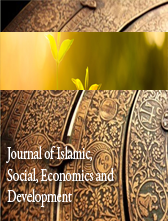BACTERIAL BLIGHT AND MOSAIC DISEASE DETECTION ON CASSAVA LEAF USING SUPPORT VECTOR MACHINE
Abstract
Cassava has been used as a staple food of many nations. It is also known as manioc, and tapioca. In Malaysia, cassava is eaten as supplementary food either steamed, boiled or fried and small cottage industries produce traditional snacks. Its tuber is the most popular form of consumption, although the leaves are also consumed at times for medicinal purposes. Even though cassava is a popular form of consumption, it is vulnerable to disease. The type of disease that can be found on cassava is bacterial blight and mosaic disease. Problems arise when farmers must detect the disease using the expert's naked eyes which takes a lot of time and is a difficult process to be carried out on a large farm and it may lead to inaccurate results. Hence, we proposed work that includes applying techniques of image processing to automatically classify cassava leaf into mosaic and bacterial blight disease. Features such as color and texture are obtained from the leaf image and Support Vector Machine (SVM) are used to classify the cassava leaf. It is found that SVM gives of 87.5% accuracy. Therefore, SVM is found effective in detecting cassava leaf diseases.













